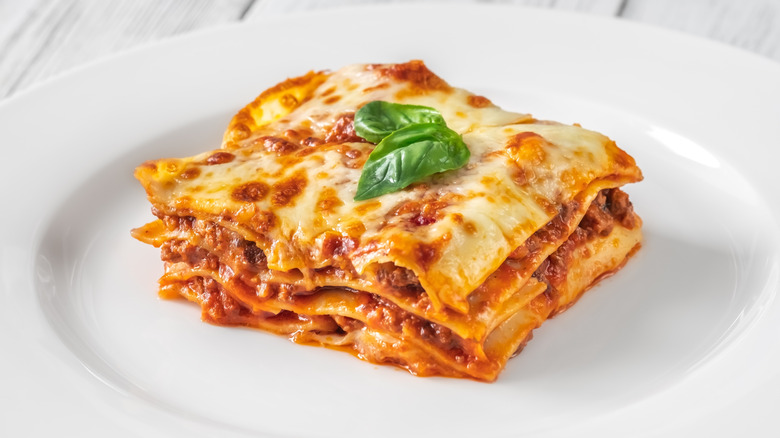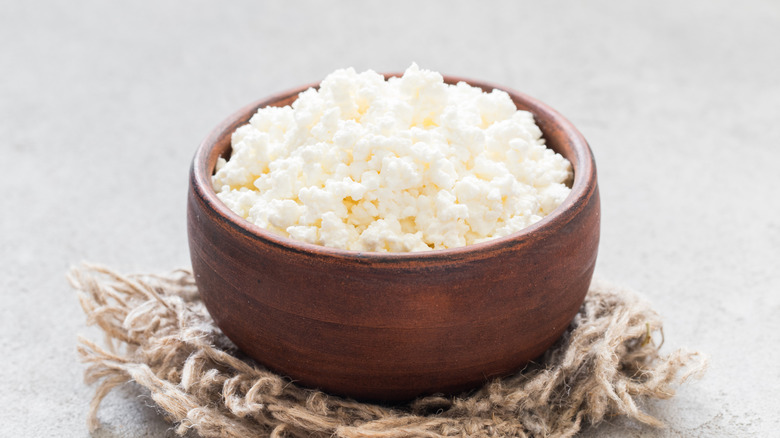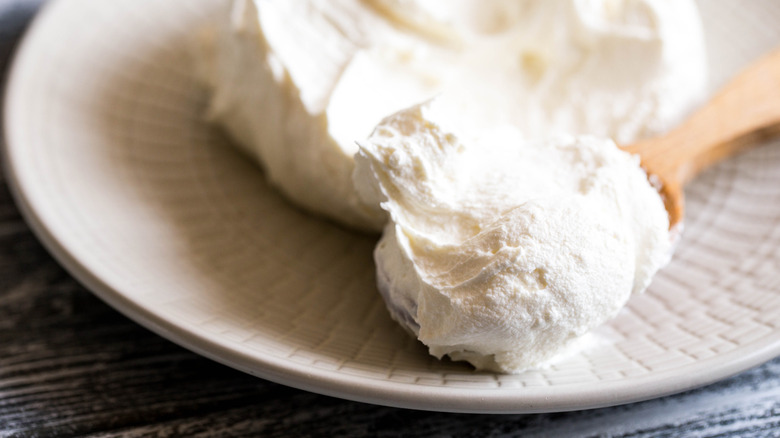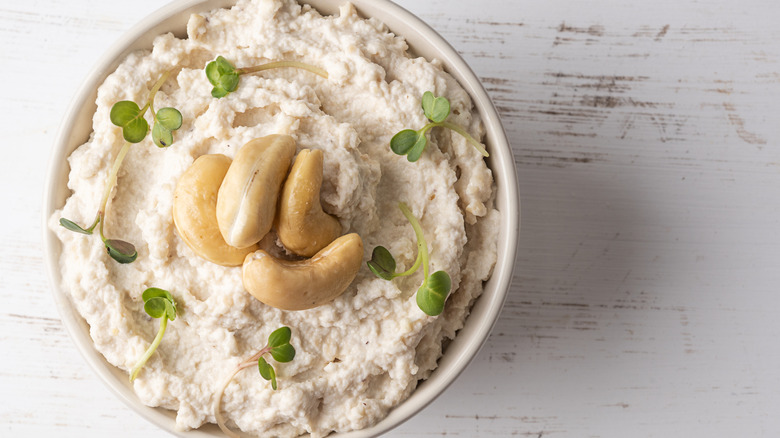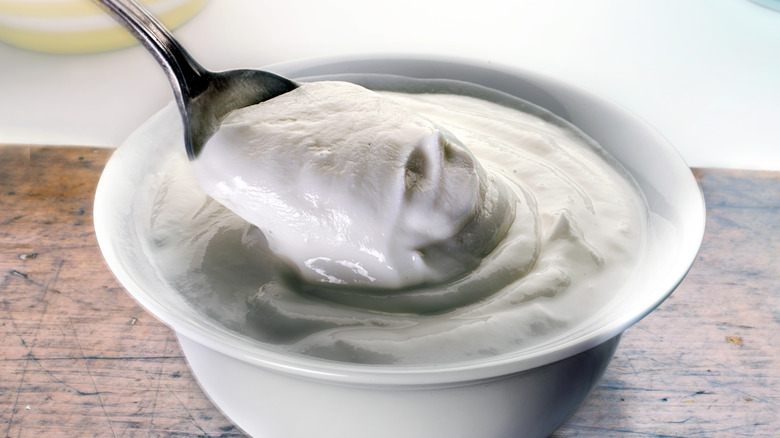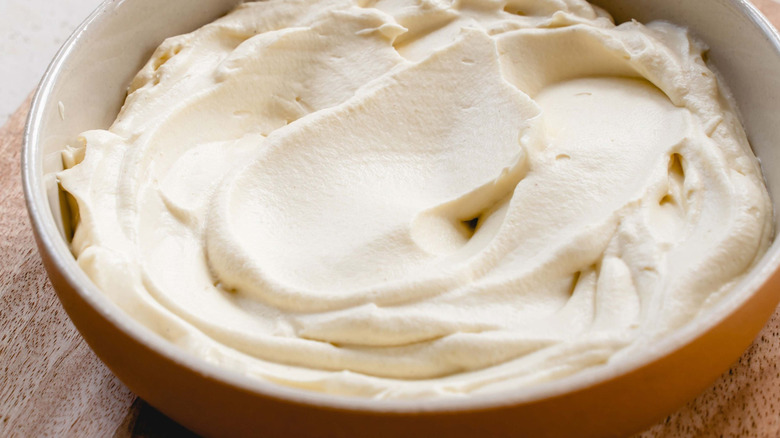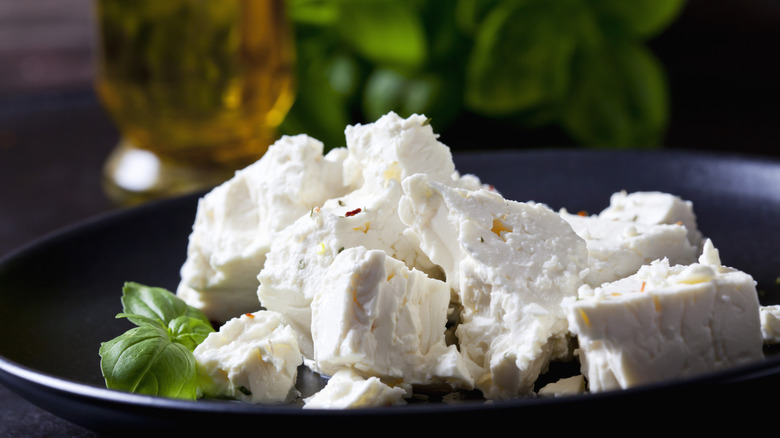Chefs Recommend 5 Ricotta Substitutes For Lasagna, And 2 You Should Always Avoid
While, sure, you can use ricotta many different ways — on your morning toast, eaten straight with a drizzle of honey, as a filling for certain pasta shapes — ricotta is most often used in many American households as the glue that holds together a homemade lasagna. Fresh, light, fluffy, moist ricotta, though, doesn't appear in the most traditional of lasagna recipes, and while many may love the stuff, others either just don't like it or are looking for alternatives that are perhaps more budget-friendly or even more diet-friendly.
To help you find the best ricotta substitutes, we spoke with multiple chefs and similar professionals to find out the ricotta substitutes that are expert-approved and those that, while appearing on many an internet listicle of supposed suitable ricotta substitutes, are actually best avoided. Our experts include Executive Chef Anthony Vitolo of Vitolo, a family-owned and operated Italian dining destination at the Conrad Fort Lauderdale Beach; David Caceres, executive chef at Casa Gianna, an Italian eatery within the Gale Miami Hotel & Residences; Liz Krause, founder of SimpleItalianCooking.com; Melissa Oleary, owner, writer and recipe developer at Keeping It Simple Italian; and chef and owner Antonio Morichini of Via Vai in New York City. Here's what they had to say.
Use: Cottage cheese
Probably one of the most well-known substitutes for ricotta cheese in lasagna, cottage cheese is often suggested as a budget-friendly alternative. Indeed, if you compare the cost of the two at Walmart, you'll find that the chain sells its store-brand 15-ounce tub of ricotta cheese for $2.67, or $2.85 per pound, while it sells its store-brand 24-ounce of cottage cheese for $2.94, or $1.96 per pound.
However, if you plan on using cottage cheese as a substitute for ricotta cheese in lasagna, do note that the texture won't quite be the same, due to the curds in cottage cheese (though throwing your cottage cheese in a food processor can help adjust for this). Additionally, you may want to add some extra cheeses to your recipe to counteract the cottage cheese's characteristic tang.
According to Liz Krause, you should add a mix of Italian cheeses to your cottage cheese for "a more rounded flavor," including Parmigiano reggiano, Romano pecorino, and/or mozzarella. Melissa Oleary adds that you can replace your ricotta with cottage cheese at a 1-to-1 ratio.
Use: Béchamel sauce
The majority of our chefs and experts agree: The real Italian method of making lasagna doesn't even include ricotta, so if you don't have any on hand or don't want to use it for whatever reason, simply skip it. As for its traditional replacement, you likely already have the ingredients in your pantry and fridge to make the oh-so-simple béchamel sauce. According to Chef Anthony Vitolo, all you'll need is flour, butter, and milk. Some recipes also add salt to taste and a small amount of nutmeg.
The béchamel sauce is not only more traditional than ricotta, but it also can ensure your lasagna comes out of the oven with a better texture. According to David Caceres, béchamel provides a silky and uniform lasagna layer that binds the rest of your ingredients perfectly, and it offers a more delicate, neutral flavor when compared to other potential ricotta substitutes, such as cottage cheese.
"Béchamel also ensures better moisture control during baking," he added, "keeping the lasagna cohesive and preventing it from drying out. In contrast, ricotta, which is more commonly used in Italian-American [lasagna] adaptations, can create a grainier texture and may release excess water during baking, resulting in a less consistent dish."
Use: Mascarpone
Mascarpone does share some similarities with ricotta. Both are soft, delectable cheeses made from cow's milk, and both have Italian origins. As such, mascarpone is often used as a replacement for ricotta in recipes, and vice versa. While Chef Antonio Morichini does say that mascarpone could be used in a lasagna in place of your ricotta, he does also note that the end result will be on the non-traditional side. This is because, despite the two cheeses' similarities, there are some slight differences. For one, mascarpone does have more of a buttery-sweet flavor profile, compared to ricotta's tartness. For two, mascarpone is slightly heavier and richer, with Morichini likening it to cream cheese.
If you're not keen on the idea of a "non-traditional" lasagna, you can make efforts to tweak your mascarpone so that it's slightly more similar in taste to a ricotta or even a béchamel sauce. Some home cooks on Reddit, for example, suggest seasoning mascarpone like you might a béchamel sauce, with salt and nutmeg, or combining it with other cheeses like Parmesan as you might when using cottage cheese in place of ricotta.
Use: Cashew cheese
What if, though, you can't or don't want to eat any other cheeses or similar dairy products, but you still want to make an amazing lasagna? In this case, mascarpone, cottage cheese, and a traditional, milk-based béchamel aren't going to work for you. Instead, consider using cashew cheese, a vegan option that chef Antonio Morichini says should work in place of ricotta, so long as you personally like the spread-ability and flavor of cashew cheese. Melissa Oleary likewise noted that cashew cream could be particularly suitable for use in lasagna recipes that already call for a béchamel sauce rather than ricotta (in case you don't have the requisite milk, butter, and flour on hand).
If you're a long-time vegan or just eschewing dairy for other dietary reasons, you're probably already quite familiar with cashew cheese. However, if you're not, basically cashew cheese is made by blending soaked cashews with nutritional yeast and some other ingredients for flavor, like oil, salt, or garlic. Then, you allow the cashew cheese to set in the refrigerator until it becomes easily spreadable.
Another popular vegan ricotta substitute is tofu, which is often processed much the same way as cashews, in terms of making a cheese substitute. The tofu is blended with oil, nutritional yeast, and other flavorings, until you get the correct texture for your intended use.
Use: Greek yogurt
Greek yogurt, while thick and spreadable (at least compared to normal yogurt), is a popular choice for subbing in for other, similar dairy ingredients like sour cream, where you might want a little more protein and a little less fat. Accordingly, you might think that you can use Greek yogurt as a substitute for the ricotta in your lasagna — and you can, but with a caveat. Our experts were split as to whether or not you should really use Greek yogurt in your favorite layered pasta.
According to chef Antonio Morichini, Greek yogurt's sour flavor probably isn't going to do you many favors if you add it to your lasagna in place of ricotta. While, yes, cottage cheese is a popular ricotta substitute and it comes with a certain tang, too, that's nothing compared to the lip-puckering sour of a spoonful of Greek yogurt.
On the other hand, though, Melissa Oleary says that you could potentially use Greek yogurt in place of ricotta in a pinch, but only if you season it the same as you might ricotta or other substitutes. If you do go the Greek yogurt route, consider adding some other Italian cheeses, herbs, salt, and pepper to the yogurt before layering it into your lasagna.
Avoid: Crème fraîche
So what should you actually hands-down avoid subbing in for your ricotta in your lasagna recipes, according to the experts? While crème fraîche is suggested in a lot of articles that offer up a plethora of potential ricotta substitutes, chef Antonio Morichini says that crème fraîche's lack of consistency and strong acidity make it a poor substitute in reality.
If you've never had crème fraîche before and you're wondering what the big deal is, consider that it's almost comparable to sour cream, though not quite as acidic. Like yogurt, crème fraîche contains a bacterial culture, which gives the cream its sour flavor. As such, if you add crème fraîche to your lasagna, you're going to end up with a pretty tart dish, and the creamy consistency isn't really going to hold up well against the other layers of lasagna noodles, sauce, and cheese. Keep your crème fraîche where it belongs — much like sour cream, for example dolloped in sauces and soups, or mixed into baking recipes, or even added to your scrambled eggs.
Avoid: Feta
If you're just scratching the bottom of the fridge and looking for any ol' ingredient to use in place of ricotta in your lasagna, you may grab the first cheese you see and wonder if it's a potential substitute. However, if that cheese you've picked up is feta, just go on ahead and set it back down. According to chef Antonio Morichini, feta's very distinctive flavor and saltiness is going to stand out in your lasagna, and not in a good way. Additionally, the clumpy feta crumbles aren't going to compliment your lasagna's overall texture the way a creamier ricotta substitute might.
So, yes, while ricotta is a cheese, that doesn't mean that you can use any other cheese in place of it. If you are looking for a ricotta replacement that's strictly cheese-based (and not the faux vegan cashew cheese suggested above), consider cottage cheese or mascarpone, as our experts advised, and leave the feta and other very distinctive cheeses alone.
